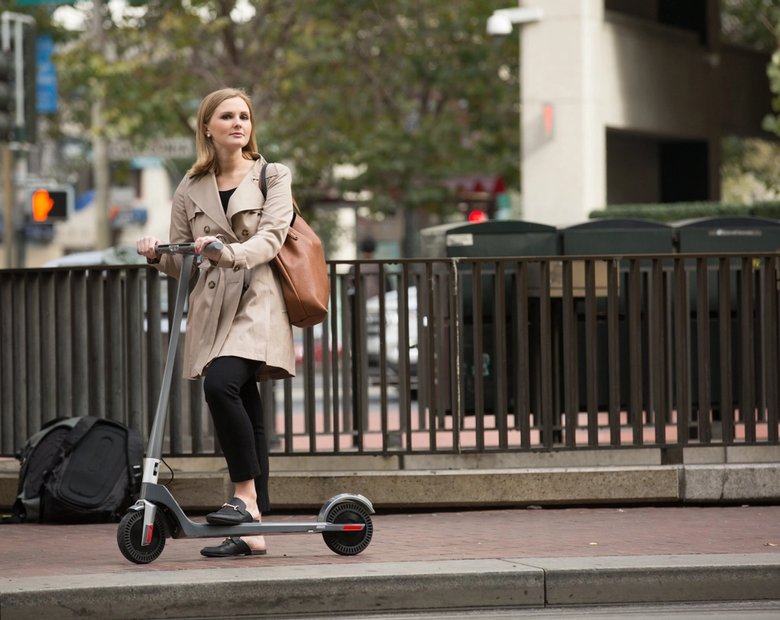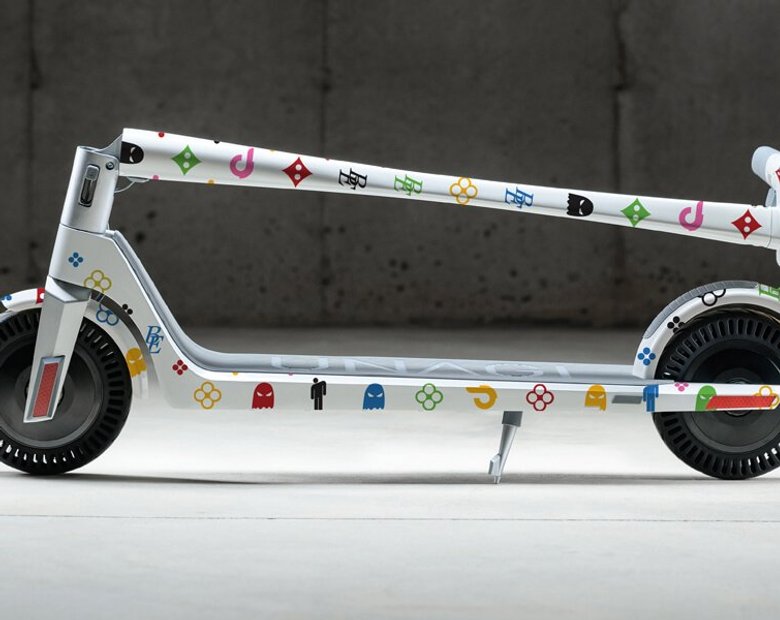When we think of braking on an electric scooter, it seems straightforward—just a quick squeeze of a lever, and voilà - you're slowing down. But beneath this seemingly simple action lies a complex interplay of mechanics and energy dynamics.
Traditionally, stopping an electric scooter has relied on the familiar mechanics of drum and disc brakes. You pull the lever, it tugs a wire or pushes some hydraulic fluid, and bam—you've got contact between the pads and the disc on your scooter's wheels, subsequently slowing it down. This process, while effective in halting motion, results in the generation and subsequent loss of kinetic and heat energy at the contact areas (a somewhat wasteful side effect). Necessary? Sure. Efficient? Not by a long shot.
But what if there is a way to harness or prevent this loss of energy during braking? Yes. Shift gears to an efficient braking system that is a bit more innovative: regenerative braking.
Regenerative braking in electric scooters
Regenerative braking is a form of electronic braking that steps away from the traditional brake design, eliminating the need for that physical, friction-based contact. This means less energy is lost as heat and sound. So, where's all that kinetic energy going when you're slowing down? It's getting a second life, repurposed and converted into electrical energy, and fed right back into your scooter's battery. More range, perhaps? That's the million-dollar question.
However, regenerative braking isn't exactly new. It's been part of the broader EV narrative since the early 2000s, but its popularity has surged alongside the rise of electric vehicles and PEVs. Fast forward to today, and it's becoming a standard feature in many e-scooters, from entry-level models upwards, celebrated for enhancing efficiency and potentially extending range.
In this guide, we're going to delve into the nitty-gritty of electric scooter regenerative braking. We'll examine its efficiency, including whether it can significantly increase the range of electric scooters and if it's capable enough to replace traditional mechanical disc and drum brakes. Additionally, discuss its benefits and limitations, and show riders how to best use this system to their advantage.
How regenerative braking works in electric scooters
For those looking to understand regenerative braking without getting bogged down in complex scientific concepts, here's a simplified explanation:
When you ride an electric scooter and engage the regenerative braking system, there's a significant shift in how the motor functions. Normally, the motor powers the scooter forward using energy from the battery. But during regenerative braking, the motor undergoes a role reversal. It starts to act not only as a brake but also as a generator, effectively charging the battery.
Here's what happens: As soon as you engage the electric scooter regenerative brake or release the throttle, the power supply to the motor is cut off. However, the electric scooter is still moving and therefore has kinetic energy, which is the energy it possesses due to its initial motion.
This kinetic energy doesn't just dissipate; the motor, now functioning as a generator, captures and converts it into electrical energy. This newly generated electricity is then channeled back into the scooter’s battery, giving it a slight recharge. Simultaneously, this energy conversion process creates a drag force (natural resistance in the motor), which contributes to slowing down the scooter.
Essentially, regenerative braking is a clever use of the scooter's own motion to help power and brake it, making the whole system more efficient.
For those interested in exploring this topic more deeply:
Understanding the motor and its role
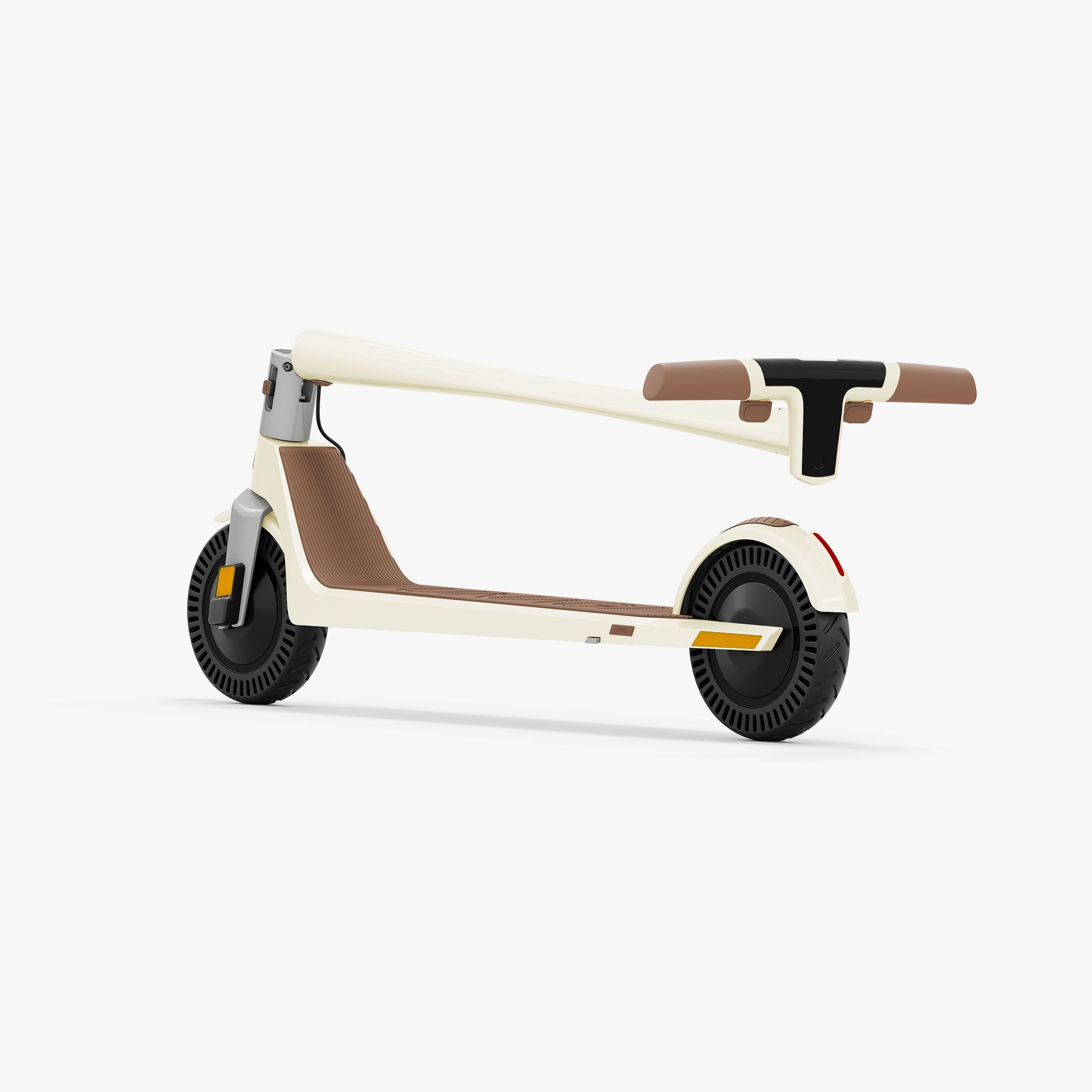
Understanding regenerative braking requires a basic grasp of the AC/DC motor's operation in e-scooters, as well as an understanding of the fundamental physics principle that states energy cannot be created or destroyed, only transformed from one form to another.
Electric scooters, like all electric vehicles, rely on an AC/DC motor for propulsion. However, e-scooters mostly use DC motors, particularly brushless DC (BLDC) motors, for their efficiency, low maintenance, and compact size. A DC motor works on the principle of converting electrical energy (from the battery) into mechanical energy (wheel rotation), made possible by the interaction of magnetic fields and electric current.
The electric energy comes from the battery, but where does the magnetic field come from?
At the heart of the BLDC motor are two primary components:
- Stator: The stationary part of the motor with coiled wire.
- Rotor: This is the moving part of the motor, equipped with permanent magnets.
When the electric scooter is switched on and the throttle is engaged, the controller sends an electric current through the stator’s coils, creating a temporary magnetic field. This electromagnetic field from the stator interacts with the magnetic fields of the rotor’s permanent magnets, generating a rotating magnetic field (RMF) through attraction and repulsion between the poles. The RMF induces the rotor to turn, driving the scooter. Typically, the RMF speed is greater than the rotor speed.
For more information on how BLDC motors work, see What are Brushless DC Motors.
The process of regenerative braking
An interesting aspect of electric motors is their dual function. While they typically convert electrical energy into mechanical energy during normal operation, running a properly designed motor in reverse turns them into generators, converting mechanical energy back into electrical energy. And that's the whole principle of how regenerative braking works.
When a rider initiates braking (through a lever, button, or by releasing the throttle on some models), the electronic circuits in the electric scooter cut off the power supply to the motors. Despite this, the scooter retains its momentum, and the kinetic energy continues to drive the rotation of the motor's rotor.
In this reversed operation, where the wheel drives the rotor instead of the other way around, the rotor's mechanical motion induces an electric current in the stator windings. This effectively transforms the motor into a generator, operating on the principle of electromagnetic induction, much like a bicycle dynamo. The movement of the rotor’s magnets past the stator windings generates electricity, which specialized electric circuits route the electricity generated by the motor into the vehicle's batteries.
Moreover, this whole process creates resistance against the rotor's rotation (Counter Electromotive Force). This resistance, or drag, is what provides the braking effect. The intensity of this effect can vary depending on how much energy the system is set to recover. The more aggressive the energy recovery setting, the stronger the braking effect.
Limitations and considerations of regenerative braking systems
While regenerative braking is a groundbreaking technology in e-scooters, like anything else, it's got a few quirks and limitations. For starters, it's not as efficient at low speeds, and a bunch of factors like the battery's condition and temperature can affect how well it works. Moreover, regenerative braking alone may not always bring an electric scooter to a complete stop, necessitating the use of traditional electric scooter brakes when needed.
Let's have a comprehensive look at the limitations of regenerative brakes.
They capture little kinetic energy
Here's the deal with kinetic energy: it's all about how fast you're going and how much you (and your scooter) weigh. The formula goes like this: K.E. = 1/2 m v² where 'm' is the mass (in kilograms ) and 'v' is the velocity (in meters per second).
Translation? More speed and weight mean more kinetic energy.
But let's zoom in on your standard, entry-level electric scooter—the kind most folks have. Sure, there are some high-speed beasts out there hitting 70 mph (112.65 km/h), but the bulk of scooters, especially the entry-level ones, top out at less than 20 mph (32.19 km/h). And weight-wise? Entry-level models start light, around 20 lbs (9.07 kg), but can go up to 182 lbs( 82.55 kg) for the heavy hitters. However, most of the entry to mid-level e-scooters are under 70 lbs (31.75 kg). Toss in the average rider, usually under 220 lbs (100 kg), and you've got a relatively modest setup in terms of speed and weight, which means just a modest amount of kinetic energy available for regenerative braking to work with.
Let's delve into a small analysis for better understanding. We will examine a hypothetical scenario where a scooter, with a total load of 220 lbs (100 kg), is traveling at a speed of 30 km/h ( 8.3 m/s). In this scenario, the kinetic energy just before braking is approximately 3472.22 joules. Calculated as KE = 1/2 × 100 kg × (8.33334 m/s)² ≈ 3472.22 joules.
Battery capacity vs. kinetic energy
The capacity of electric scooter batteries varies significantly. While entry-level models might offer around 144 Wh, the high-end ones can boast up to 5040 Wh.
To contextualize, let's assume our theoretical electric scooter has a 300 Wh battery. This capacity translates to 1,080,000 joules (considering 1 Wh = 3600 joules). Comparing this to the kinetic energy of our hypothetical scooter, we see that the energy recoverable from braking (3472.22 joules) is merely a drop in the ocean compared to what's stored in the battery.
So, what's the overall impact here? That energy we just clawed back with regenerative braking could stretch the scooter's range by only about 252.62 feet (77 meters), assuming the e-scooter has a baseline range of 15 miles (24.14 kilometers). It's not something to brush off, but in the larger picture of energy recovery for electric scooters, it's just a small player.
Furthermore, it's important to consider the energy dynamics involved in starting and stopping. Starting from a complete stop is particularly energy-intensive, and in some cases, the energy gained from regenerative braking might be entirely consumed by the effort of restarting.
To mitigate this, a simple yet effective strategy is to give the scooter a manual push before starting the motor, kind of like a kick scooter. This small action can significantly reduce the energy burden on the electric motor during startup, preserving some of the energy that was recaptured during braking.
Battery charging limitations
The C-rate of rechargeable batteries, indicating how quickly they can be charged or discharged relative to their capacity, also plays a role.
Most scooter batteries are capable of handling a charge rate of about 100 to 300 joules per second. But even at the higher end of this spectrum, the rate in most cases is still lower than the amount of kinetic energy produced per second during braking. Thus, the limitations imposed by the battery's C-rate further reduce the efficiency of kinetic energy recovery.
In the case of our theoretical scooter, which generates approximately 3,472.22 joules of kinetic energy just before braking, fully harnessing this energy would require extending the braking process over a significant duration - specifically, over 30 seconds if we assume a charging rate of 100 joules per second. However, in practical scenarios, braking typically occurs over just a few seconds. This means that only a small fraction of the kinetic energy can be captured.
Is regen brake affected by temperature?
Your electric scooter's battery is like a creature of habit; it loves its comfort zone. Ideally, it likes temperatures between 15-35°C (59-95°F) for operation and 5-45°C (41-113°F) for charging. Stray beyond these limits, and their efficiency diminishes.
Dip too low, below 5°C (41°F), and the battery gets sluggish. The ions inside don't move as freely, kind of like how we're slower when we're cold. This can lead to something called lithium plating on the anode, which isn't good for the battery's health or safety.
On the flip side, if it's too hot, over 50°C (122°F), the battery starts to feel the strain. Charging and discharging in such heat can accelerate battery degradation, risking gas generation and cell swelling. Most certified electric scooter batteries have battery management systems to mitigate these risks, often by reducing regenerative braking to manage recharging currents and protect the battery, which consequently limits the regenerative braking force from the electric motor.
Is the regen brake affected by the battery state?
The effectiveness of regenerative braking is closely linked to the battery's charge level.
When your battery's chock-full, it's like having a stuffed backpack—there's no room to cram in more. Similarly, fully charged batteries have limited capacity to store additional energy, making regen braking less effective at near-full charge. Recognizing this, most e-scooters are designed to slightly reduce regenerative braking as the battery charge approaches 100%, helping to avoid overcharging.
But let's get real – when are you ever at 100% battery for long? The moment you hit the road, or even just flick on your scooter, that battery starts to drop, ensuring that regenerative braking is almost always active to some degree.
Furthermore, to maintain the health of the battery and prevent it from experiencing high voltage stress, it's commonly advised to charge lithium batteries only up to 80–90% of their full capacity, rather than 100%. This practice not only prolongs the life of the battery but also ensures there's always some room for the energy recaptured by the electric scooter's regenerative brakes.
It's also worth noting that modern electric scooters employ a hybrid braking system that combines both regenerative and mechanical braking. This system typically operates with a brake lever, which engages the regenerative braking at a light press and then shifts to mechanical braking for more substantial stopping power when pressed harder. This dual-function system provides a safety net in instances where regenerative braking might not kick into action.
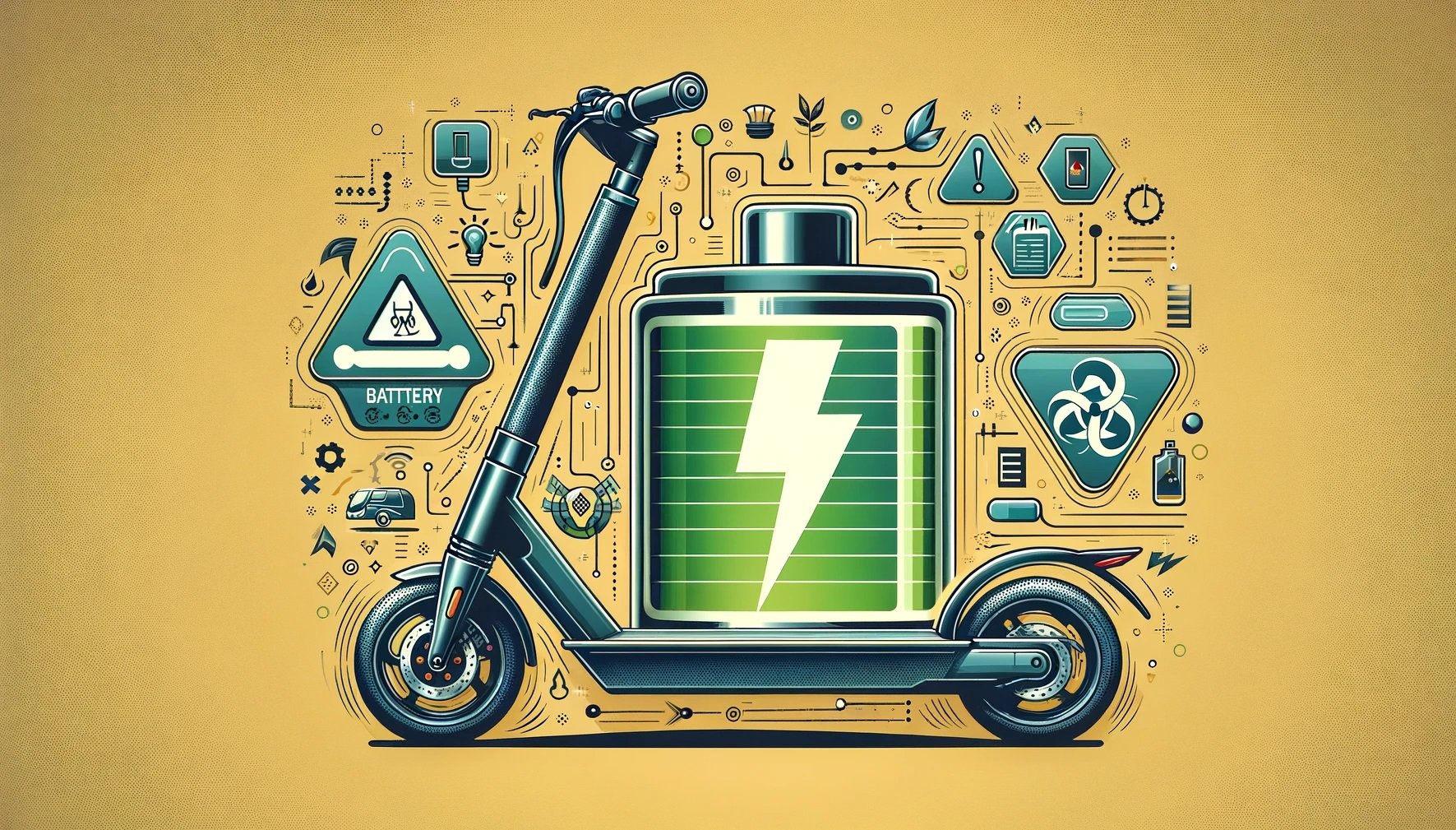
The effectiveness of regenerative braking is closely linked to the battery's charge level.
When your battery's chock-full, it's like having a stuffed backpack—there's no room to cram in more. Similarly, fully charged batteries have limited capacity to store additional energy, making regen braking less effective at near-full charge. Recognizing this, most e-scooters are designed to slightly reduce regenerative braking as the battery charge approaches 100%, helping to avoid overcharging.
But let's get real – when are you ever at 100% battery for long? The moment you hit the road, or even just flick on your scooter, that battery starts to drop, ensuring that regenerative braking is almost always active to some degree.
Furthermore, to maintain the health of the battery and prevent it from experiencing high voltage stress, it's commonly advised to charge lithium batteries only up to 80–90% of their full capacity, rather than 100%. This practice not only prolongs the life of the battery but also ensures there's always some room for the energy recaptured by the electric scooter's regenerative brakes.
It's also worth noting that modern electric scooters employ a hybrid braking system that combines both regenerative and mechanical braking. This system typically operates with a brake lever, which engages the regenerative braking at a light press and then shifts to mechanical braking for more substantial stopping power when pressed harder. This dual-function system provides a safety net in instances where regenerative braking might not kick into action.
Provides inadequate braking power
Regenerative braking is pretty decent for most braking situations, but when you need to slam on the brakes in one of those "Oh no!" moments--that's where it gets a bit iffy. The system is designed for a controlled, gradual, and smooth deceleration, not for abrupt stops.
The underlying mechanism of regenerative braking involves a counter-electromotive force (CEMF) that opposes the motor's rotation. This force is most noticeable at the onset of braking, where you might feel a strong initial bite. However, this sensation of braking strength tends to fade as the scooter's speed decreases. This fading effect occurs because CEMF is intrinsically linked to the forward rotation of the motor; as the e-scooter slows down, less CEMF is generated, leading to a reduction in braking power.
Moreover, the efficiency of regenerative braking systems is optimized for certain speed ranges, typically higher speeds. At lower speeds, or beyond a certain high-speed threshold, these systems may not be as effective.
Typical braking distance of regenerative brakes
Electric scooters relying solely on regenerative braking have a longer braking distance compared to those with additional braking systems due to the less aggressive nature of these brakes. For an e-scooter traveling at 15 mph (24.14 km/h), the average braking distance with only regenerative braking can be around 40 feet (12.92 meters). However, this distance can vary depending on several factors, including the implementation of the regenerative braking system, the weight of the rider + electric scooter, temperature, and road conditions.
Using only regenerative braking - Yes, But.
Most scooters aren't crazy fast, so regen brakes are usually enough for most braking situations. Plus, regenerative braking systems in modern electric scooters are indeed becoming more sophisticated and effective.
Many models now offer stronger regenerative braking capabilities, to the point where some users might find them a little bit intrusive in slowing down the scooter. Fortunately, these systems often come with adjustable settings, allowing riders to tailor the braking intensity to their comfort and riding style
But for optimal safety, it's crucial to have additional braking systems like foot or disc brakes or even a drum brake, especially for those unexpected stops.
In a nutshell, regenerative braking in electric scooters is pretty awesome, but it's not the end-all-be-all. It's part of a bigger braking picture, so don't rely on it alone. You never know when one system might fail, so having an extra way to stop is a good idea.
Which brakes do UNAGI scooters have?
The UNAGI line of scooters (Model One and Voyager) are equipped with a comprehensive and redundant braking system, ensuring both safety and efficiency. This system incorporates two distinct types of brakes, each contributing to the overall braking performance.
- Dual Electronic Anti-lock Brakes: The first system features robust electronic anti-lock brakes for both the front and rear wheels. These brakes are designed with variable control, which means the pressure applied to the brake lever directly influences the braking intensity. The more you press down on the lever, the stronger the braking action becomes. This system provides riders with precise control over the scooter's braking force.
- Intuitive Friction Brake: Alongside the electronic brakes, the models also include a friction brake (foot brake) located on the rear wheel. This foot brake serves as a backup for situations where sudden and strong braking is needed, offering an additional layer of safety. The friction brake is easy to use and responds intuitively to the rider's actions.
When you pair up these two braking systems, you've got yourself a solid setup. In fact, an independent e-scooter reviewer from Rider Guide conducted tests and achieved impressive results. When using the electronic brakes alone, the braking distance from 15 mph was measured at 25 feet. However, when both the electronic and foot brakes were combined, the braking distance was reduced significantly to just 16.9 feet. This performance is comparable to that of a top-of-the-range mechanical disc brake, highlighting the effectiveness of the redundant braking system in the UNAGI scooters.
The benefits of regenerative braking
Regenerative braking offers a multitude of benefits, stemming primarily from its ability to capture and reuse energy typically lost during braking. This innovative approach leads to a bunch of neat perks:
Boosts efficiency and squeezes extra miles
The first and most obvious advantage of regenerative braking is its role in enhancing the overall energy efficiency of electric scooters. This system cleverly recaptures energy that would otherwise be lost as heat and noise in conventional braking, thereby extending battery life and slightly increasing the scooter's range.
However, it's important to keep expectations in check. E-braking won't magically double your range unless you spend more time slowing down than you do moving. In a well-functioning regen system, you can expect just a slight increase in range, typically less than 2%. For example, if a scooter has a tested range of 15 miles, you might see a range increment of around 0.3 miles. While this might not seem significant, it's still better than losing that energy.
This topic, along with a detailed illustration of the limitations of regenerative braking, is further explored in the 'Limitations of Regenerative Brake' section.
And here's a tip: Combine this with good riding habits (more on that later) and following best charging practices, and you might see those numbers inch up a bit more.
Cuts down on wear and tear
Electric scooters and other vehicles equipped with regenerative braking are known for their low maintenance requirements. Unlike traditional braking systems that heavily rely on friction, regenerative braking doesn't involve physical components coming into contact with each other, which means there is virtually no wear and tear. This, in turn, results in significantly reduced maintenance costs.
A big win here is how regen brakes ditch the need for brake pads or rotors. This means you can forget about the pain of getting those brake pads changed all the time.
And let's not forget the bigger picture. Less wear on the bits and bobs means these systems are likely to hang around a lot longer than their traditional braking counterparts. Over time, this whole less-replacement, less-repair thing can stack up to some real tidy savings for scooter owners.
Smoother braking
In addition to the previously mentioned benefits, regenerative braking systems offer a smoother and more controlled braking experience for riders. This aspect significantly enhances rider safety and comfort.
Traditional braking systems can sometimes result in abrupt or jerky stops, which can be unsettling and potentially hazardous, particularly for inexperienced riders. In contrast, regenerative braking allows for gradual deceleration, avoiding sudden jerks that could lead to loss of control or riders being thrown off the handlebar.
Are regenerative brakes noisy?
Regenerative brakes are known for their quiet operation since they don't involve physical contact between parts during braking. Additionally, their less aggressive nature means they rarely lock the wheels, which effectively prevents tire squeals.
However, as these brakes age and their efficiency decreases, they might emit a faint humming, whirring, or buzzing sound while generating power, but this is usually subtle and often negligible, especially when compared to the more significant noise produced by conventional braking systems.
How do you use regenerative braking efficiently?
To fully leverage the capabilities of regenerative braking and enhance your riding experience, it's essential to adapt to its somewhat less aggressive nature, which can lead to longer braking distances. Therefore, adopting a proactive and anticipatory style of riding is crucial when using regenerative brakes.
Here are several key pointers to help you utilize regenerative braking effectively, ensuring an enjoyable and safer riding experience.
Gradual and controlled braking
Develop a keen awareness of your surroundings and foresee stops or slowdowns. By adjusting your speed in advance and allowing the scooter to decelerate naturally, you optimize the regenerative braking system's ability to capture energy.
This approach not only contributes to a seamless and controlled ride but also helps avoid last-minute emergency brakes, which regenerative brakes aren't well-suited for.
Selective braking in non-critical situations
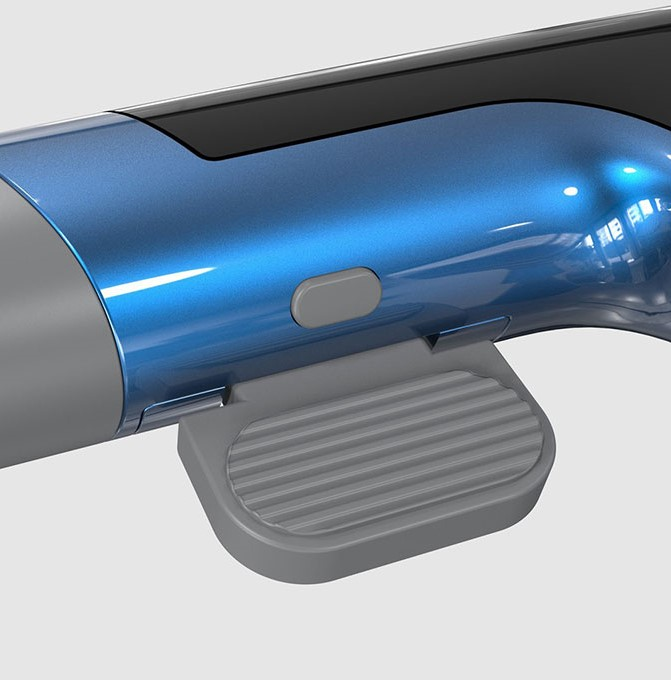
When your scooter comes with multiple braking mechanisms, remember the golden rule: milk that regen brake for all it's worth, especially when you don't need to make a sudden stop.
This strategic use of regenerative braking, along with anticipating stops, plays a crucial role in maximizing the regenerative braking system's potential. What's more, it helps prolong the lifespan of your mechanical brakes, sparing them from unnecessary wear and tear.
Utilize downhill momentum

When riding downhill, allow the scooter to use its own momentum, engaging regenerative braking gently. For instance, cruising downhill for 5 minutes can yield a considerable amount of energy. This is due to the increased momentum and the fact that you do not need any throttle going downhill, so minimal energy is drawn from the battery.
Conclusion: Are regenerative brakes that efficient?
So, wrapping this up, regenerative braking systems on electric scooters are a bit of a mixed bag, but the upsides? They're pretty hard to ignore when it comes to amping up scooter efficiency.
While it's true that they only generate a modest amount of energy due to constraints like limited kinetic energy and slow battery recharging, their contribution to the scooter's energy conservation is significant. These systems recover energy that would otherwise be lost.
Efficiency is another strong suit of regenerative braking. By eliminating the need for traditional brake pads or discs, they not only reduce wear and tear but also cut down on maintenance requirements.
When it comes to performance, regenerative brakes have come a long way.
Initially, they weren't the strongest standalone systems, but recent technological advancements have made them more reliable and effective. Modern regenerative brakes can now bring an electric scooter to a complete stop on their own, although many models still integrate them with other systems like foot or mechanical disc brakes for optimal performance and safety. This enhanced functionality has led to their widespread integration as a common feature in electric scooters.
As a result, regenerative brakes are pretty much a given in the industry these days, so shelling out extra cash for them doesn’t make much sense. Instead, consider it a value-added bonus and focus on making sure you’ve got a solid, reliable primary braking system for overall safety.
As for how much regenerative brakes help extend the range of your scooter, well, that's still up for debate. But while it may not significantly increase the range, it undoubtedly adds some extra miles without any extra effort or cost.
To wrap it all up, regenerative braking systems are a smart addition to electric scooters. They bring to the table not just energy efficiency and reduced maintenance, but also the subtle yet valuable benefit of extra range.
To understand more about how they compare with other braking systems, explore our comprehensive guide to electric scooter brakes.




















